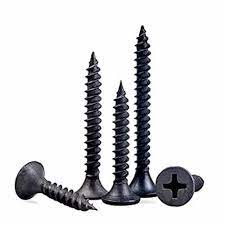metric self tapping screw hole size quotes
Understanding Metric Self-Tapping Screw Hole Sizes
When it comes to assembling materials and creating sturdy structures, self-tapping screws are invaluable. These fasteners are designed to tap their own holes in a material as they are driven in, which makes them a go-to choice for various applications—especially in metal and plastic. This article explores the concept of metric self-tapping screws, focusing on the importance of hole sizes and the key considerations you should keep in mind when selecting them for your projects.
What are Self-Tapping Screws?
Self-tapping screws feature a sharp, pointed end that allows them to create a mating thread in the material they penetrate. This ability eliminates the need for pre-drilled holes, which can save time and effort in many construction and manufacturing situations. The design of self-tapping screws varies based on their application, material, and the type of thread they have. Important specifications include the screw diameter, length, and the type of drive (Philips, slotted, hex, etc.).
Importance of Hole Sizes
The size of the hole into which a self-tapping screw is driven is critical to ensuring a secure fastening. If the hole is too large, the screw may not grip properly, leading to a weak connection that can compromise the integrity of the assembly. Conversely, if the hole is too small, it can cause the screw to strip or break, rendering it ineffective.
Metric Sizing System
The metric system is widely used around the world for mechanical components, including screws. A metric self-tapping screw is typically designated by its diameter and length in millimeters (mm). For example, a screw labeled M3 x 10 indicates a diameter of 3 mm and a length of 10 mm. This system allows for precise measurements and is essential in applications where an exact fit is necessary.
Recommended Hole Sizes
The appropriate hole size for a self-tapping screw depends on its diameter and type. For metric screws, a general rule of thumb is to refer to the manufacturer's specifications, which often provide a chart indicating the recommended pilot hole size. Typically, the pilot hole should be slightly smaller than the screw’s outer diameter to ensure that the threads bite into the material effectively.
metric self tapping screw hole size quotes

For instance - M2.5 Screws Recommended hole size around 2.3 mm - M3 Screws Recommended hole size around 2.7 mm - M4 Screws Recommended hole size around 3.5 mm
These figures can vary based on the screw's thread design and the material being used. Always consult product data sheets for the best recommendations.
Material Considerations
The material into which the screw will be driven also plays a significant role in determining hole size. Softer materials may require a slightly larger diameter hole since they allow for easier thread engagement. Conversely, harder materials necessitate tighter tolerance to ensure that the threads can properly grip without stripping.
Practical Tips
1. Test with Scrap Pieces Before final assembly, always test screws in scrap pieces of the same material. This approach helps determine the right hole size and screw engagement strength.
2. Use Quality Screws Investing in high-quality self-tapping screws can make a significant difference in performance. They are less likely to break or strip and provide better grip.
3. Consider Thread Design Different thread designs can influence how effectively a self-tapping screw can fasten. Coarse threads provide better grip in softer materials, while fine threads offer superior holding power in hard materials.
Conclusion
Understanding metric self-tapping screw hole sizes is crucial for anyone involved in assembly, manufacturing, or construction. Selecting the correct screw and ensuring the appropriate hole size not only optimizes the integrity of your structures but also enhances safety and durability. By considering the metrics, material properties, and application requirements, you can achieve robust connections that stand the test of time. Remember, a little preparation goes a long way in ensuring the success of any project.
-
Top Choices for Plasterboard FixingNewsDec.26,2024
-
The Versatility of Specialty WashersNewsDec.26,2024
-
Secure Your ProjectsNewsDec.26,2024
-
Essential Screws for Chipboard Flooring ProjectsNewsDec.26,2024
-
Choosing the Right Drywall ScrewsNewsDec.26,2024
-
Black Phosphate Screws for Superior PerformanceNewsDec.26,2024
-
The Versatile Choice of Nylon Flat Washers for Your NeedsNewsDec.18,2024










